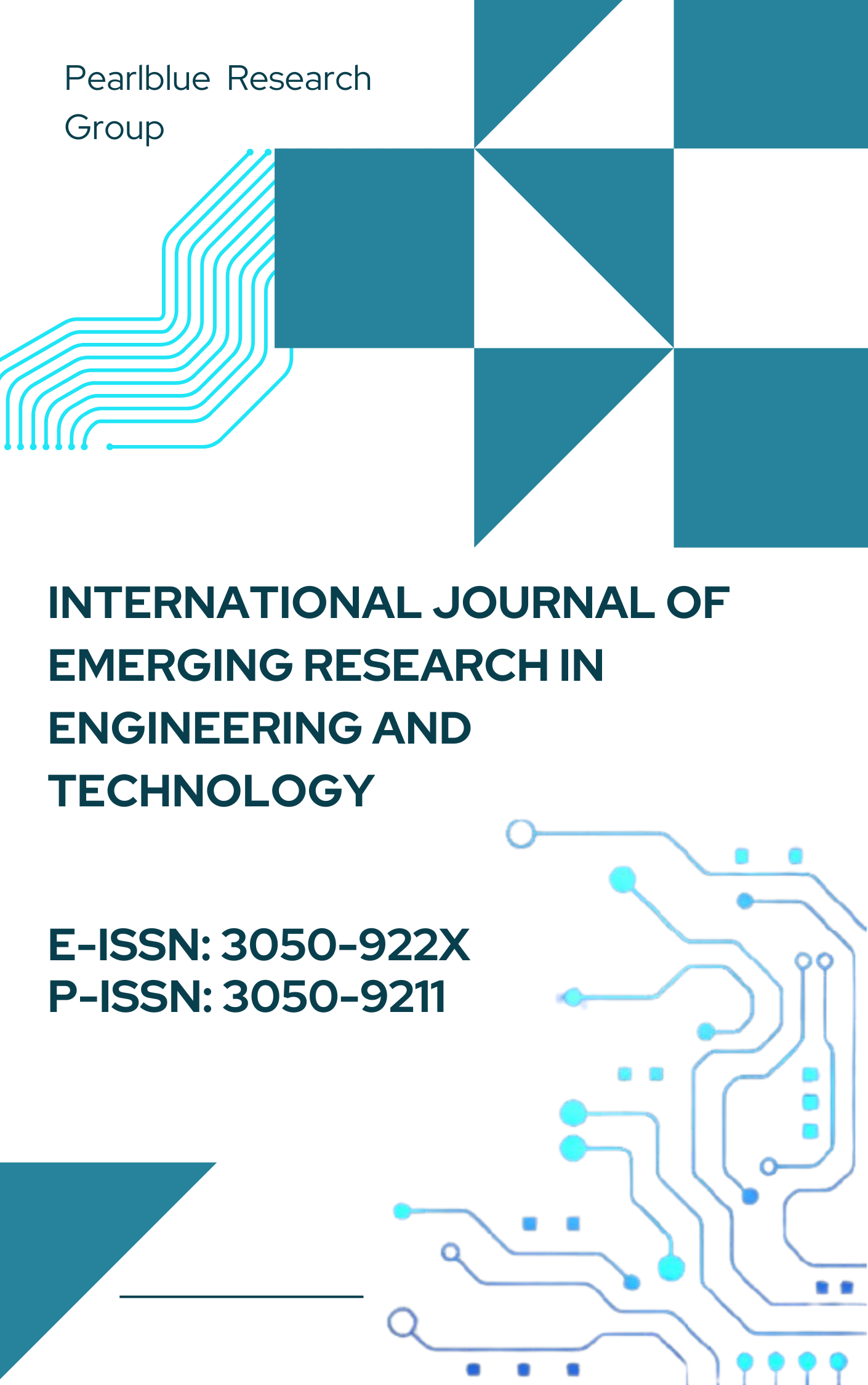Oracle vs PostgreSQL: Cost Analysis for Enterprises Adopting Cloud-Native Strategies
DOI:
https://doi.org/10.63282/3050-922X.IJERET-V5I3P103Keywords:
Oracle, PostgreSQL, Cost Analysis, Cloud-Native, Database Management Systems, Licensing Fees, Scalability, Operational ExpensesAbstract
As the world is going digital day by day, companies are adopting more and more cloud-native solutions to increase the scalability and flexibility of their systems and reduce costs. Having the right DBMS is crucial when redesigning a new system and a fourth appropriate system that fits the organization's financial and operation strategies. Oracle is well-known as a proprietary deterministic database solution that provides high performance, high security, and professional support while being associated with high prices for licenses and maintenance. On this note, PostgreSQL, through an open-source database, has risen through the ranks due to key factors such as cost, possibility of scalability, and experience. In this paper, the evaluation of these two DBMSs in terms of their costs is discussed, and factors such as licensing costs, infrastructure costs, maintenance costs, and support costs of the two DBMSs are also compared. From such aspects, enterprises will be better positioned to make performance and cost-effective decision-making to support their cloud-native transformations.
Adopting cloud-native architectures also requires organizations to consider other costs around databases apart from the license charges. Issues like the scalability of a solution, achieving the best performance, and the challenges related to being trapped by a particular vendor’s offering are also paramount in long-term business planning. These extra-cost components are 1) high availability, 2) clustering, and 3) security, which Oracle offers as additional packages to its basic product, which raises the TCO. On the other hand, since PostgreSQL is an open-source database, it does not claim such expenditures yet performs similarly to MySQL with the help of extensions and third-party contributions. This paper also considers hidden costs, including migration difficulty and training costs that affect savings. Therefore, by answering the research questions and conducting the cost-benefit analysis, this research will help the enterprises understand which of the two databases DBMS is most appropriate for the cloud-native approach as per its efficiency, cost, and ability to scale to meet future needs
References
[1] Spillner, J., Toffetti, G., & López, M. R. (2017, September). Cloud-native databases: an application perspective. In European Conference on Service-Oriented and Cloud Computing (pp. 102-116). Cham: Springer International Publishing.
[2] Li, S., Cheng, H. K., Duan, Y., & Yang, Y. C. (2017). A study of enterprise software licensing models. Journal of Management Information Systems, 34(1), 177-205.
[3] Juba, S., Vannahme, A., & Volkov, A. (2015). Learning PostgreSQL. Packt Publishing Ltd.
[4] PostgreSQL® vs. Oracle: Difference in Costs, Ease of Use & Functionality, Scalegrid, 2020. online. https://scalegrid.io/blog/postgresql-vs-oracle-difference-in-costs-ease-of-use-functionality/
[5] The Oracle to PostgreSQL Shift: Navigating the Transition in Commercial Products, online.
[6] Li, F. Cloud Native Database: Principle and Practice. Springer Nature.
[7] Martins, P., Tomé, P., Wanzeller, C., Sá, F., & Abbasi, M. (2021). Comparing Oracle and postgresql, performance, and optimization. In Trends and Applications in Information Systems and Technologies: Volume 2 9 (pp. 481-490). Springer International Publishing.
[8] Natti, M. (2023). Migrating from Oracle to PostgreSQL: Leveraging Open-Source to Reduce Database Costs and Enhance Flexibility. The Eastasouth Journal of Information System and Computer Science, 1(02), 109-112.
[9] Gorobchenko, S., Kovalev, D., Sokolova, V., Alekseeva, S., Zagidullin, R., Miroshikhina, E., & Yakushev, A. (2024, March). Selection of Oracle and PostgreSQL databases according to main user criteria. In AIP Conference Proceedings (Vol. 3102, No. 1). AIP Publishing.
[10] Kurako, E. A., & Orlov, V. L. (2023). Database migration from Oracle to postgresql. Programming and Computer Software, 49(5), 455-463.
[11] Advanced PostgreSQL Features: A Guide, 2021. online. https://dev.to/arctype/advanced-postgresql-features-a-guide-5dl0
[12] Erdelt, P. K. (2023, August). A cloud-native adoption of classical DBMS performance benchmarks and tools. In Technology Conference on Performance Evaluation and Benchmarking (pp. 124-142). Cham: Springer Nature Switzerland.
[13] Dong, H., Zhang, C., Li, G., & Zhang, H. (2024). Cloud-native databases: A survey. IEEE Transactions on Knowledge and Data Engineering.
[14] R. Daruvuri, “Harnessing vector databases: A comprehensive analysis of their role across industries,” International Journal of Science and Research Archive, vol. 7, no. 2, pp. 703–705, Dec. 2022, doi: 10.30574/ijsra.2022.7.2.0334.
[15] John Slaven, A Detailed Comparison of Data Modeling Tools, DZone, 2022. online. https://dzone.com/articles/data-modeling-tools-comparison
[16] Worsley, J., & Drake, J. D. (2002). Practical PostgreSQL. " O'Reilly Media, Inc.".
[17] Wessler Boneti, G. (2023). Identify threat models and protection offered by different encryption possibilities in MySQL, PostgreSQL, and Oracle (No. CERN-STUDENTS-Note-2023-220).
[18] Sousa, E., Lins, F., Tavares, E., Cunha, P., & Maciel, P. (2014). A modeling approach for cloud infrastructure planning considering dependability and cost requirements. IEEE Transactions on Systems, Man, and Cybernetics: Systems, 45(4), 549-558.
[19] R. Daruvuri, “An improved AI framework for automating data analysis,” World Journal of Advanced Research and Reviews, vol. 13, no. 1, pp. 863–866, Jan. 2022, doi: 10.30574/wjarr.2022.13.1.0749.
[21] Kanagaraj, G., Ponnambalam, S. G., & Jawahar, N. (2016). Reliability-based total cost of ownership approach for supplier selection using the cuckoo-inspired hybrid algorithm. The International Journal of Advanced Manufacturing Technology, 84, 801-816.
[22] Peng, Q., Walid, A., Hwang, J., & Low, S. H. (2014). Multipath TCP: Analysis, design, and implementation. IEEE/ACM Transactions on Networking, 24(1), 596-609.
[23] Reddy Kavuluri HV. PostgreSQL vs. Oracle: A Comparative Study of Performance, Scalability, and Enterprise Adoption. International Journal of Emerging Trends in Computer Science and Information Technology (IJETCSIT): 5(2):33-41. Available from: https://ijetcsit.org/index.php/ijetcsit/article/view/99
[24] Avula SB. PostgreSQL Table Partitioning Strategies: Handling Billions of Rows Efficiently. International Journal of Emerging Trends in Computer Science and Information Technology (IJETCSIT), 2024; 5(3):23-37. Available from: https://ijetcsit.org/index.php/ijetcsit/article/view/100
[25] ReddyKavuluri HV. Advanced Role-Based Access Control Mechanisms in Oracle Databases. International Journal of AI, BigData, Computational and Management Studies (IJAIBDCMS). 2024, 5(3):24-32. Available from: https://ijaibdcms.org/index.php/ijaibdcms/article/view/69
[26] Avula SB, Reddy Kavuluri HV. Database Engineering for Microservices: PostgreSQL as the Foundation. International Journal of Artificial Intelligence, Data Science, and Machine Learning (IJAIDSML): 5(4): 20-28. Available from: https://ijaidsml.org/index.php/ijaidsml/article/view/66



